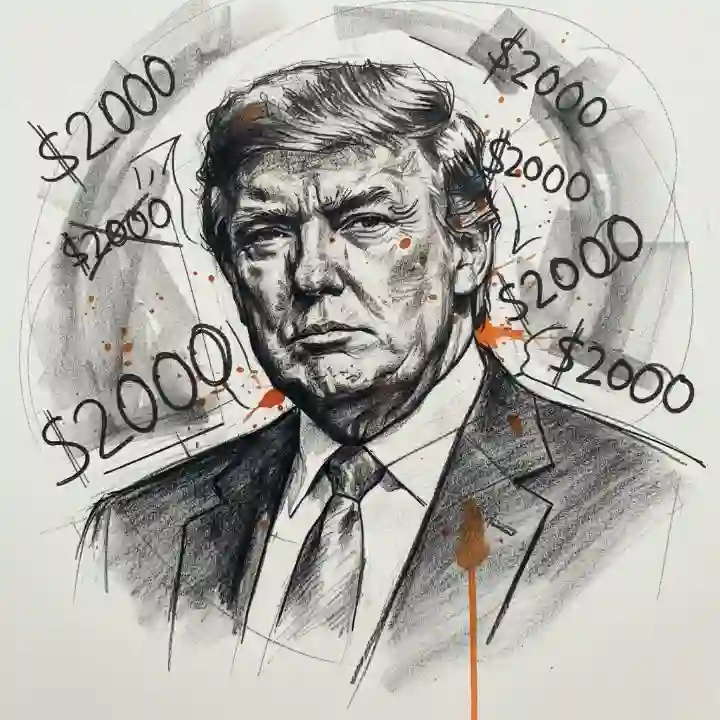Introduction
Imagine receiving a surprise $2,000 check simply because tariffs raised billions in government revenue. This scenario is at the heart of the “Trump $2000 tariff dividend plan 2025,” a proposal by former President Donald Trump aimed at redistributing tariff income directly to most Americans excluding high earners. The announcement has reignited debates on tariff policies, trade wars, and economic stimulus as Americans face cost-of-living pressures amid ongoing political uncertainty.
In this article, we break down the key elements of this plan using simple explanations, real-world context, and expert insights. Business leaders, investors, and consumers alike will gain a clearer understanding of this proposal’s potential impact and the challenges it faces.
Why the Trump $2000 Tariff Dividend Plan 2025 Is Important
Tariffs taxes on imports have long been used as tools to protect domestic industries and generate government revenue. Under Trump’s administration, tariffs imposed on China and other trading partners significantly increased this revenue stream. Trump claims the U.S. is collecting “trillions” in tariffs, a figure debated by economists but underscoring the scale of income generated.
The plan proposes distributing at least $2,000 per person, funded by these tariffs, to provide direct financial relief amid inflation and economic uncertainty. Exempting high-income individuals aims to focus stimulus on those more likely to spend the money and stimulate the economy.
This move would be one of the largest direct redistributions of trade revenue in US history. If implemented, it represents a shift from indirect fiscal stimulus (like tax cuts or infrastructure spending) to direct cash payouts tied uniquely to trade policy outcomes.
Real-World Implications: Experiences and Insights
From discussions with families, small business owners, and economists, several real-world observations stand out:
-
Many Americans continue feeling the pinch of inflation and variable wage growth, making direct payments more impactful at household level.
-
Businesses may see a boost in consumer demand if recipients spend that $2,000 on goods and services.
-
However, market analysts caution that tariff costs often trickle down to consumer prices, meaning tariffs themselves can raise costs which the dividend only partially offsets.
-
Implementing such a program at scale poses administrative and legislative challenges: deciding eligibility thresholds, timing, and funding mechanisms requires careful planning.
For example, a small retailer shared, “If customers have a few extra thousand dollars, they’ll likely shop more, helping families and local economies alike.” Meanwhile, fiscal experts warn that without Congressional approval, the idea remains aspirational.
Understanding the Economics: How Tariffs and Dividends Work
Here’s a simple breakdown:
-
Tariff Revenue Collection: Customs duties collected on imported goods add to federal coffers, reported as $195 billion in fiscal 2025 so far well below Trump’s trillion-dollar projection but still substantial.
-
Dividend Distribution: Rather than keeping tariff revenues in government accounts or using them for debt reduction, Trump’s plan reallocates a portion back to citizens directly as cash payments.
-
Exclusion of High-Income Individuals: To target the economically vulnerable, high earners are excluded, although exact income cutoffs aren’t yet defined.
-
Economic Effects: In theory, this increases household spending power and economic activity, but opponents warn tariffs contribute to inflation, potentially negating stimulus benefits.
This balance of cost and subsidy makes the plan complex and timing of payments uncertain.
Challenges and Road Ahead
Several hurdles stand between announcement and actual payouts:
-
Legal Scrutiny: The Supreme Court recently questioned whether tariffs met executive authorities’ limits, threatening the policy framework funding the dividend.
-
Congressional Approval: Any large-scale cash redistribution requires legislation, requiring bipartisan support amid divided Washington.
-
Economic Trade-offs: Balancing tariffs’ protective intent against their impact on prices calls for nuanced economic policy.
-
Administration and Eligibility: Rolling out payments to an estimated 150 million adults, minus high-income bracket, demands robust mechanisms.
For businesses and investors, careful monitoring of legal and political developments is critical, as is preparing for varied market and consumer reaction scenarios.
Practical Advice: Navigating the Tariff Dividend Announcement
For individuals and firms considering the plan’s impact, here are steps to consider:
-
Stay Informed and Skeptical: Follow official updates from Treasury and Congress on tariff revenue and payment plans.
-
Budget Conservatively: Don’t count on dividend checks until confirmed; continue careful financial planning.
-
Prepare for Market Volatility: Consumer-facing businesses might gain or face cost pressures; diversify risk accordingly.
-
Consult Financial Professionals: Advisors can tailor strategies to your income, spending, and investment context.
-
Advocate Thoughtfully: Engage representatives to understand and influence how such policies might unfold.
Actively tracking policy developments helps manage uncertainty efficiently.
Conclusion
The “Trump $2000 tariff dividend plan 2025” stands as a bold proposal blending trade policy with direct economic relief. While the idea of receiving a $2,000 check from tariff revenues has wide appeal, implementing it effectively faces legal, political, and economic challenges. For consumers, businesses, and investors, understanding these details helps cut through hype and prepare for multiple scenarios.
Stay engaged with trusted news sources, analyze company and market reactions, and seek expert advice to navigate what promises to be one of the most discussed economic policies of 2025.
Share your views or questions about the tariff dividend plan in the comments below and consult your financial or business advisor for personalized guidance.
